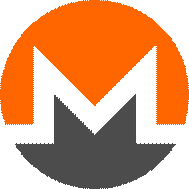Table Of Contents
Bitcoin is the world’s first decentralized cryptocurrency which initially reared its shiny head into digital markets now way back in 2009. While regular currencies have a centralized authority which controls and prints them, Bitcoin was imagined as a community controlled currency that won’t have a single entity looming over it. This lack of centralization meant that Bitcoin creator, Satoshi Nakamoto, needed to come up with a way of issuing said currency. The solution he came up with, that is still being used by this day, is mining.

How mining works
Mining provides a smart, decentralized way to issue cryptocurrency while creating an incentive for more people to mine, ensuring that new coins are produced every 10 minutes (time required to mine a single BTC block). Essentially this makes a miner comparable to a 24/7 computer accountant that verifies blockchain transactions and gets paid for it in fees/block rewards.
To ensure network fairness and safety, a difficulty increase mechanism was implemented into mining. This mechanism makes the computational requirements harder based on factors like available hardware and public interest. Currently the mining pools are massive and boast top of the line mining hardware, making the mining difficulty harder than ever. The current up-front investment and maintenance cost required to solve the mathematical problems makes Bitcoin mining simply not profitable for individual miners using consumer-level hardware. Bitcoin mining is profitable only for large-scale operations like the abovementioned mining pools, with the Chinese based Bitmain apparently raking in more than 3bn dollars in profit last year. While this difficulty gets re-adjusted every 2.160 blocks or so, there is no trend in sight showing a possible lowering.
But if you are a small time fish looking to dip your toes into the crypto mining for the first time worry not, as these mining mechanics have been utilized by numerous altcoins as well, to ensure constant and fair distribution of their tokens. These coins, while being more volatile and offering lesser rewards than Bitcoin, come with much lower entry barriers for beginner miners.
Things to know before mining any cryptocurrency
You will require a set of things to embark on your mining journey:
- A free private database aka your coin wallet. Your wallet is a password-protected storage for your earnings and keeps a network-wide ledger of transactions.
- A free mining software package, like this one from AMD
- A membership in an online mining pool, which is a community of miners who combine their computers to increase profitability and income stability. Mining outside of a pool will almost certainly mean you won’t be the one who solves the mathematical task.
- Membership at an online currency exchange, where you can exchange your mined coins for cash or Bitcoin
- A hardware setup located preferably in a cool and air-conditioned space.
- A desktop or custom-built computer designed for mining.
- An ATI/Nvidia graphics processing unit (GPU) or a specialized processing device called a mining ASIC chip. The cost will be anywhere from $90 used to $3000 new for each GPU or ASIC chip.
- Personal curiosity. You need to constantly read, research and learn, as mining technologies improve very rapidly which results in new ways of optimizing your coin mining results. The most successful coin miners spend hours every week studying the best ways to adjust and improve their coin mining performance.
As with any profitable activity, there are some pretty substantial risks to be aware of when mining a cryptocoin:
- Losing your digital wallet
Plenty of ways to do this, either by locking yourself out by forgetting your login data or by having your hard drive damaged.
- Dishonest mining pool organizers
A mining pool that is run by dishonest administrators from bady regulated countries could skim coins from your earnings or take off with the complete coin haul. Some pools collect membership fees which can lower your profits.
- Electricity costs could make your mining unprofitable
For most mining computers, a cost of 14 cents/kilowatt hour is the most you want to pay for your mining hobby. Above 14 cents, mining currencies such as Bitcoin, Litecoin, Peercoin, or Feathercoin will not be worth the investment. You also need to consider your dollar-per-day rate, as rates of say two dollars profit per day could take two years for you to pay off your hardware investment (if you decide to sell right away and not hodl).
- Hackers
It is possible that a talented hacker can break into your mining pool and empty the users’ wallets, including yours.
- The cryptocurrency you mine could drop in value
Say you decide not to sell your coins the moment you mine them but rather to hold onto them for a while. Just like gold or any other commodity, there is a chance that the market value of your cryptocoins will change over time. If the value falls, you might end up sitting with a bag full of nothing.
These risks, while being real and dangerous, can certainly be reduced. Here are a few suggestions for managing your coin mining vulnerabilities:
- Good habits
Store your coin wallet on a detachable memory drive, which you will detach from your computer and network when you’re not using it. Transfer your coins regularly from your online storage (if using a cloud mining service) into your detachable wallet so they do not accumulate online. Also develop a personal habit of backing up your wallet every two days and keep your password written down in a safe place. And please don’t click random twitter links promoting giveaways or airdrops.
- A reputable mining pool/cloud service
Pools/cloud services with active online communities that have good reputations are your best bet. Hashflare, Genesis, Hashing24, Minex, Minergate, NiceHash are just some of the most often mentioned ones.
- Lock your electricity fees
Some electricity providers will allow you to lock in your per-kilowatt-hour fee for a year or two. If you can do so at 14 cents or less per kWh, then do it. 10 cents per kWh and less is excellent, not just for mining but for your own benefit as a consumer.
What is the easiest crypto to mine?
Another question with no correct and fixed answer. Look at it this way: once a new coin comes into the market, it fairly unknown and can be mined easily as there are not a lot of miners interested in it. As it starts getting some traction and recognition in the community, people start turning their attention and rigs towards it making it more difficult to mine with every new rig that enters its network.
So, the best way to find coins that are easy to mine is to sift through forums and crypto groups and picking out coins that sound promising but still lack stronger name presence in the community. Mine and accumulate the new coins as much as you can and hope the price will rocket some time later once it hits bigger exchanges and broader community gets to know it.
Best available Altcoins for mining
Ravencoin
One of the reasons Ravencoin has gained popularity so quickly is the X16R algorithm it uses for proof-of-work mining.
The X16R algorithm is actually 16 different algorithms, which are used randomly during mining and the order depends on the hash of the previous block. Because of this randomness it’s extremely difficult to program an ASIC machine to mine the X16R algorithm. And even if someone tried to make an ASIC for the algorithm the developers could simply change the algorithms being used in X16R.
Based on what we’ve read the general consensus is that for Nvidia cards the best miner is zealot/enemy-1.08. The downside of this miner is that it’s closed-source with a 1% developer fee.
There are several ways to estimate your mining profitability with Ravencoin. The first is through WhattoMine.com. The second is RavenCalc, which gives you the same information as WhattoMine.
Finally, you can use the bot in the Ravencoin Discord channel by entering “!hash xx“, where the “xx” is replaced with you hash power. The bot is pretty accurate.
ZENCash
ZEN on the other hand already has more features than both ZCL / BTCP with very active development. If you’re holding mined coins then you can also setup secure nodes (42 zen stake) which generate about 25% ROI yearly right now, which is more money in your pocket than mining something without nodes. Secure nodes also do not require locking your tokens so if you decide you want to sell one day you are free to move your coins and do so. It is also always in the top 5 or so on WTM in my experience.
back to menu ↑
AEON
Aeon is the most CPU friendly because of Cryptonite-light PoW. This narrows the CPU vs GPU performance gap considerably: you get a 3x hash rate improvement on CPUs compared to only 2x for GPUs compared to regular (Monero style) Cryptonite PoW. It doesn’t seem to be infested by ASICs yet, at least not as badly as those others.
Electroneum (ETN)
ETN is basically built on its own chain of blocks that comes from bitcoin. It aims at capturing the mobile games and online gambling market. Currently, it is easy to use mobile devices for fast transactions and easy payments.
Feathercoin (FTC)
Feathercoin is a cryptocurrency which was launched as an alternative option for Bitcoin, the most popular currency. This currency came into existence in 2013 amid having a small trading volume. Feathercoin uses NeoScrypt and GPU’s can help to extract it.
Ethereum

Ethereum is an open-source, public, blockchain-based distributed computing platform and operating system featuring smart contract functionality. Ethereum is currently the second most expensive coin on the market. Its mining difficulty is pretty high as well but mining it can still be very profitable. It supports a modified version of Nakamoto consensus via transaction based state transitions. It utilizes SHA-3 (Secure Hash Algorithm 3) hash algorithm and can be mined with both AMD/Nvidia cards through mining pools like Ethermine, 2Miners, Ethpool. Ethminer is your best bet for GPU mining. The Ethereum mining community has a neat reddit page which you can visit to get more information.
Litecoin

Litecoin is a peer-to-peer Internet currency that enables instant, near-zero cost payments to anyone in the world. Litecoin features faster transaction confirmation times and improved storage efficiency than the leading math-based currency Bitcoin. With substantial industry support, trade volume and liquidity, Litecoin is a proven medium of commerce complementary to Bitcoin. Litecoin uses the Scrypt hash function from Tenebrix, an early altcoin, instead of using Bitcoin’s SHA-256 function. Litecoin Pool, Antpool and LTC.top are some of the most popular LTC mining pools. You can store your LTC on the Litecoin Core client which can be downloaded. Total amount of Litecoin which will be issued is 82 million. This is another coin whose mining community is big on reddit.
Monero

Monero is regularly recognized as the most advanced privacy coin out there. It is based on a proof-of-work hashing algorithm known as CryptoNight, which is designed with certain specifications that make it difficult for Monero mining using ASICs to work well. In turn, it is actually relatively easy to mine Monero on your PC.
To mine with just your CPU, all you need to do is download Monero mining software and install it. Using only your computer’s processing power, you can generate new Monero coins. However, you can increase your earnings by purchasing a graphics card that will increase your computing power so that you can mine even more Monero. AMD graphic cards are best suited for this task although Nvidia cards work also. Most often used Monero mining software is MultiMiner and the GUIminer. You can store your Monero coins on the official Monero desktop wallet.
Dogecoin

Unironically Dogecoin is another very popular cryptocurrency that can be mined using a PC. Programmer Billy Markus based a fully functional internet cryptocurrency capable of storing value and being used for transactions… on a meme image of a rather perplexed looking shiba inu. Obviously the internet loved the idea and Dogecoin is currently holding an impressive 34th place on coinmarketcap.com list of coins with biggest market caps. It uses a Scrypt hashing algorithm and plans on issuing 100 billion coins.
To mine Dogecoin, first download the official desktop wallet from the Dogecoin website.
You can mine Dogecoin either only using your CPU or by increasing your mining power with an AMD/NVIDIA graphic card. The best mining software to use when mining Dogecoin using GPU’s is CGminer, CudaMiner, and GUIminer. To CPU mine Dogecoin you can use CPU miner.
It is also possible to join a mining pool for greater returns and CoinEx and MultiPool are good choices.
Vertcoin

Vertcoin is a relatively new altcoin that uses a Lyra2RE proof-of-work algorithm to verify transactions. Vertcoin was also designed to be ASIC resistant. This means that it’s designed to resist the development of specific hardware to use for mining purposes by large cryptocurrency mining operations. Instead it uses a Vertcoin team issued one-click miner. The miner is a graphical user interface (GUI) miner that facilitates mining for both CPU and GPU users. It has two mining pools based on your computing power. If you have less than two graphics cards then you should pick Network 2; if you have more you should pick Network 1. Vertcoin supports AMD and NVIDIA graphics cards.
Ultimately, there are many, many more coins that can be mined. Usually you can find these coins listed on websites like Coinwarz, Minergate or Whattomine. These websites compare various cryptocurrencies mining profitability to Bitcoin to determine if a cryptocurrency is more profitable to mine than Bitcoin. The cryptocurrency profitability information displayed is based on a statistical calculation using the hash rate values entered. So before making your decision on what to mine, you should visit one of the mentioned websites. Your individual profitability may still vary as the calculator does not account for difficulty and exchange rate fluctuations, stale/reject/orphan rates, pool efficiency and pool fees.
All things considered, mining on commercial hardware won’t net you much profit. Laptops are especially not suitable for mining as they are likely to overheat. Even people utilizing 4-GPU mining rigs struggle to reach over 10 dollars of profit per day. Buying 4 AMD RX 580 is a pretty hefty investment and not many people are willing or able to make it. However, more and more people are investing this kind of money, with some regularly sinking thousands of dollars in mining hardware. Still, even the most advanced mining hardware could net you about 50 dollars per day. While there are places where that can be considered serious money, it’s basically the daily minimum wage in most developed western countries. Mining should be considered as a side activity which can slowly drip funds into your wallet and give you some extra money. Think of it as ‘gathering gold dust’ rather than collecting full sized gold nuggets. Just make sure to research the cryptocurrency you wish to mine; for every Dogecoin or Litecoin there is an exit scam waiting to dump their developer bags onto its network. Mining shitcoins whose value will drop before you sell them means that you are likely to end up holding bags filled with the bad kind of dust. So as with every crypto-related activity, you need to set up some reasonable goals and perform a cost – benefit analysis which will give you a clearer idea of how much (or if anything) you wish to invest into becoming a miner yourself.